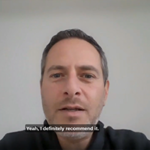Redefine Masculinity with a Fuller Mustache
A mustache has long been a symbol of character, confidence, and personal identity. For many, patchy or uneven facial hair can affect self-image and style. A mustache transplant offers a permanent and natural-looking solution by restoring density and shape—helping you achieve the facial definition you’ve always wanted.
Using advanced techniques like FUE, healthy hair follicles are carefully transplanted from the scalp to the upper lip area, ensuring natural growth direction and texture. Whether you’re restoring hair lost to genetics, scarring, or simply enhancing your look, mustache transplantation can transform not just your face—but your confidence, too.
Your Hair Journey at a Glance
Discover the key steps of your personalized hair restoration journey. From consultation to aftercare, we make every step simple and clear for you. Let’s take a closer look at how it all comes together.
Step 1: Free Consultation
Step 2: Hair Analysis
Step 3: Treatment Planning
Step 4: Travel & Procedure
Discover the Truth: 500+ Genuine Patient Reviews Speak for Themselves
See what our patients have to say about their transformative journey and outstanding results with our expert care.
OUR CLINIC & HOTEL
Scientific Hair Transplant Clinic
Understanding Mustache Transplantation
What is a Mustache Transplant?
A mustache transplant is a cosmetic hair restoration procedure that involves extracting healthy hair follicles—usually from the back of the scalp—and implanting them into the mustache area. This is done to increase density, redefine shape, or restore hair lost due to genetics, trauma, or scarring.
Unlike temporary or artificial solutions like micro-pigmentation, a mustache transplant provides permanent, natural-looking results using your own hair. Once the follicles are implanted and healed, they continue to grow like normal facial hair.
Who is It For?
Mustache transplants are ideal for:
-
Men with sparse or uneven mustache growth
-
Those who have lost facial hair due to scarring or injury
-
Individuals seeking more masculine or defined facial features
-
Patients who want to reshape or thicken their existing mustache
Cultural or personal identity often plays a role in the desire for fuller facial hair, and this procedure allows men to align their appearance with their self-image.


Causes of Mustache Hair Loss
Genetics and Hormonal Factors
Many men experience patchy mustache growth due to hereditary patterns or hormonal imbalances, especially involving testosterone and DHT. If you’ve always had thin or uneven facial hair, the cause is likely genetic and can be corrected through transplantation.
Scarring and Trauma
Physical trauma, such as burns, accidents, or previous surgeries, can result in permanent hair loss in the mustache area. Hair does not regrow in scar tissue naturally, but transplanting follicles into those areas can restore a natural appearance.
Medical Conditions
Conditions like alopecia areata, trichotillomania (hair-pulling disorder), or the side effects of chemotherapy may cause mustache hair loss. Transplantation is often a viable solution after the underlying condition has been treated or stabilized.
Mustache Transplant Techniques
Follicular Unit Extraction (FUE)
FUE is the most widely used and preferred method for mustache restoration. It involves extracting individual hair follicles from the donor area using a micro-punch tool and implanting them into the recipient area one by one.
Benefits of FUE
-
Minimal scarring (dot-like marks hidden by hair)
-
Short recovery time
-
Natural-looking results with precise placement
-
No stitches or large incisions
FUE is especially beneficial for mustache transplants because it allows for delicate handling of small grafts and detailed shaping of the mustache area.
Direct Hair Implantation (DHI)
DHI is a more refined variation of FUE where follicles are implanted using a Choi implanter pen without creating incisions beforehand. It offers enhanced control over depth, direction, and angle of implantation.
When to Use DHI
-
For high-density mustache design
-
In cases requiring maximum control in small or scarred areas
-
When shorter recovery and minimal trauma are desired


Ideal Candidates for a Mustache Transplant
Eligibility Requirements
The ideal candidate for a mustache transplant is:
-
In good general health
-
Over 20–25 years of age (to ensure facial hair maturity)
-
Has stable facial hair patterns
-
Has healthy donor hair available (usually from the scalp)
Patients must also have realistic expectations. The goal is improvement—not perfection—and density will build gradually over months.
Donor Hair Considerations
The donor hair must match the texture and thickness of natural facial hair. Hair from the occipital scalp (lower back of the head) is usually ideal because it is coarser and blends well with mustache hair.
If donor hair is insufficient or too fine, the surgeon may limit the number of grafts or recommend alternative treatments.
The Mustache Transplant Procedure: Step-by-Step
1. Consultation and Design
The first step is a consultation where the surgeon evaluates your facial features, hair type, and expectations. A custom mustache design is drawn to suit your face shape and aesthetic goals.
This design ensures symmetry, proper density, and a natural appearance.
2. Donor Hair Extraction
Using the FUE or DHI method, hair follicles are carefully extracted one by one from the donor area. The surgeon selects only healthy, viable grafts to maximize survival rate and natural growth.
3. Graft Preparation
Once extracted, follicles are preserved in a solution that ensures hydration and vitality. Each graft is examined under magnification to confirm its suitability before implantation.
4. Implantation
Grafts are then implanted into the mustache region at the correct depth and angle, mimicking natural hair growth direction. This step is crucial for achieving a realistic outcome.
The number of grafts varies, typically between 300–700 for full mustache restoration.


Recovery and Aftercare
Immediate Post-Op Care
-
Mild redness and swelling may occur for 2–3 days.
-
Tiny scabs form where follicles were implanted and fall off within 5–7 days.
-
Avoid touching, shaving, or washing the area for the first few days.
Shedding Phase (Shock Loss)
Around 2–4 weeks after the procedure, transplanted hairs typically shed—this is normal. New growth begins around 3 months and continues to improve over the next 6–12 months.
Long-Term Maintenance
-
Once fully healed, the mustache can be shaved or trimmed.
-
Regular grooming helps blend the transplanted hair with existing hair.
-
No special products are needed, though some clinics recommend biotin or gentle cleansers.
Expected Results
Timeline
-
1–2 weeks: Healing and scab removal
-
1 month: Shedding phase begins
-
3–4 months: Initial regrowth appears
-
6–9 months: Noticeable density and shape
-
12 months: Full results achieved
Aesthetic Outcomes
The results look natural, symmetrical, and permanent. Hair grows in the direction it was implanted, matching native mustache texture and behavior.
Risks and Considerations
Possible Side Effects
-
Temporary swelling or redness
-
Minor discomfort in donor or recipient areas
-
Ingrown hairs or uneven growth (rare and correctable)
These are typically mild and resolve on their own when proper aftercare is followed.
Minimizing Risks
Choosing an experienced surgeon and following all post-operative instructions are key to minimizing complications and ensuring a successful outcome.
Cost of Mustache Transplant
What Affects the Cost?
-
Number of grafts required
-
Clinic location and reputation
-
Surgeon’s expertise
-
Technique used (FUE vs. DHI)
-
Additional services (e.g., consultation, aftercare kits, accommodation)
Average Cost Range
Mustache transplants typically cost between $1,000 and $3,000 depending on the factors above. In countries like Turkey, high-quality results are available at more affordable rates due to favorable medical tourism pricing.
Why Choose Turkey for Mustache Transplants?
-
Experienced surgeons with facial hair specialization
-
Affordable all-inclusive packages
-
Modern clinics with international accreditation
-
Seamless medical tourism experience including transport and hotel

Mustache Transplant – Frequently Asked Questions
We have compiled the most frequently asked questions about the topics you are curious about. You can contact us for more information.
A mustache transplant is a minimally invasive surgical procedure that involves transplanting hair follicles—typically from the back of the scalp—into the upper lip area to create or enhance mustache growth. It’s ideal for men with sparse, patchy, or uneven mustache growth due to genetics, scarring, burns, or hormonal imbalances. It’s also suitable for individuals seeking a fuller, more defined facial hair appearance for cultural or aesthetic reasons.
Yes. Once transplanted, the hair follicles adapt to their new location and begin growing just like natural mustache hair. The new hair can be shaved, trimmed, or styled according to personal preference. As the follicles come from your own scalp, there’s no risk of rejection, and the final result blends seamlessly with your existing facial hair.
The procedure typically uses the Follicular Unit Extraction (FUE) technique. Individual hair follicles are harvested from the donor area—usually the back of the head—and carefully implanted into the mustache region. The surgeon places each graft at the correct angle and direction to replicate natural mustache growth. The procedure is done under local anesthesia and takes a few hours to complete.
Recovery is generally quick and well-tolerated. Mild swelling, redness, or scabbing may appear in the treated area for a few days. Most patients resume normal activities within 2–3 days. The transplanted hairs may shed in the first few weeks—a normal process called shock loss. New growth typically starts around 3 months post-op, with full results visible between 6 and 12 months.
Complications are rare but can include minor swelling, redness, or temporary numbness. If not performed by an experienced surgeon, risks like follicle misplacement or unnatural growth patterns may occur. Infection is also a slight risk, but this is minimized by proper hygiene and post-operative care. Choosing a qualified clinic and following aftercare instructions ensures optimal healing and natural-looking results.











